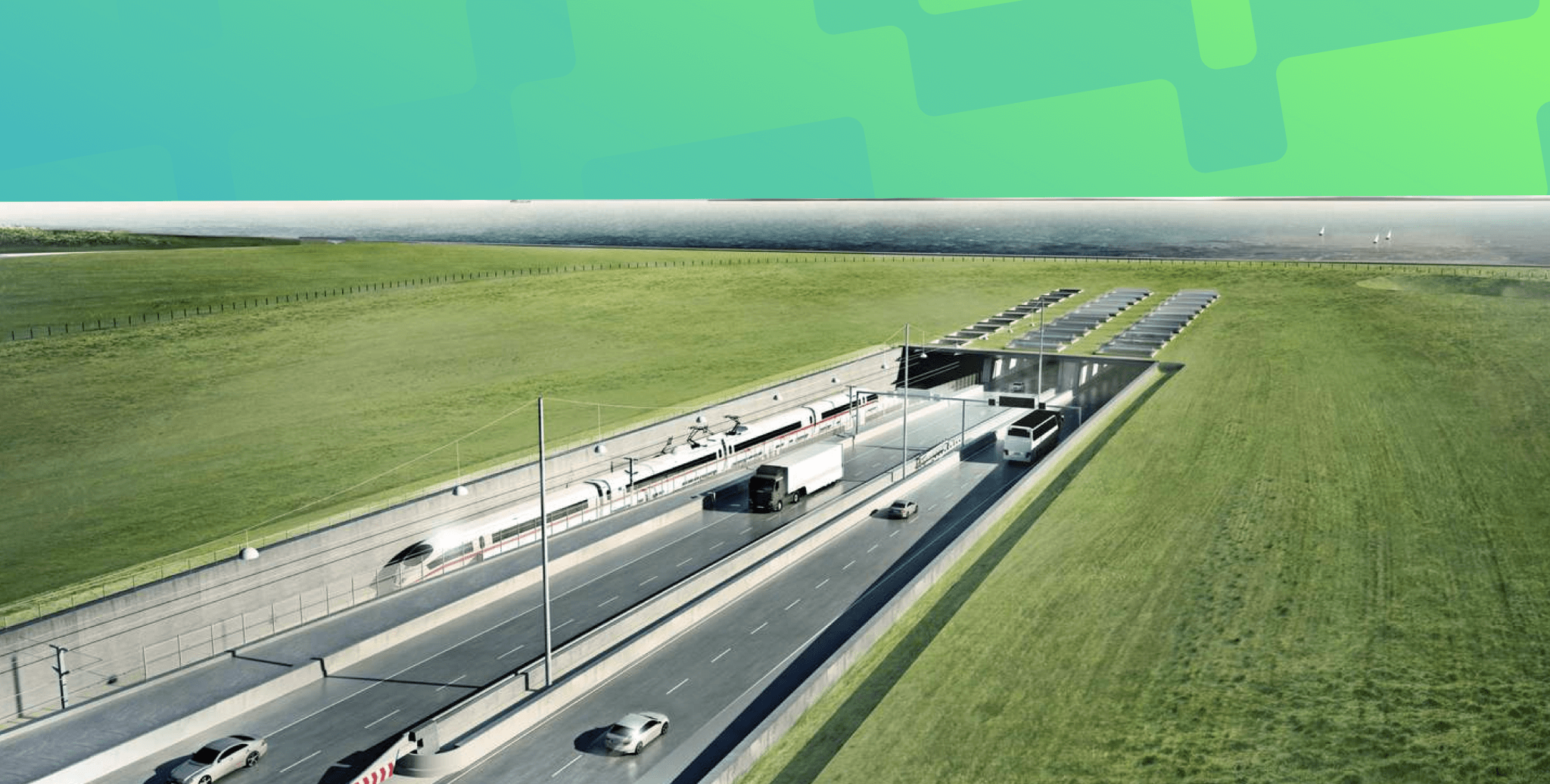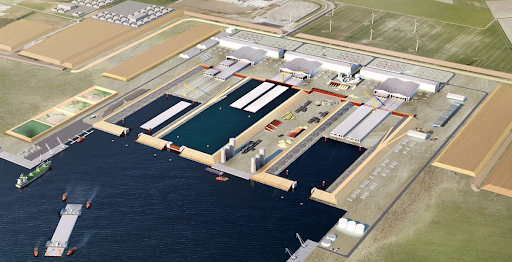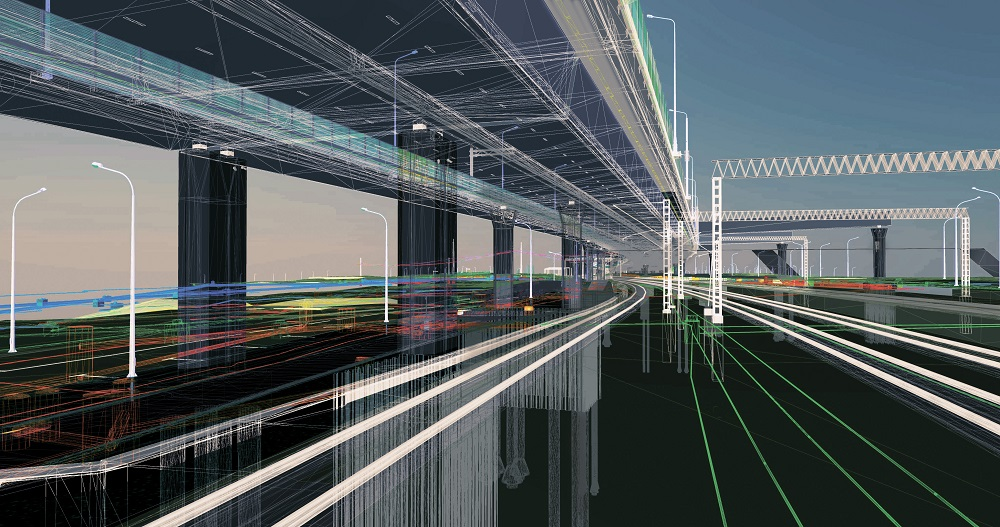BIM's Role in the Construction of the Fehmarnbelt Tunnel

Table of Contents
The Project Timeline
The intent of constructing a tunnel connecting Denmark and Germany across the Fehmarn Belt has been around for many decades. Although initial proposals for a tunnel were made in the 1960s, it wasn't until the 1990s that any formidable initiatives were taken. These studies helped the European Union identify the need for better transport links between the Scandinavian countries and the rest of Europe. Hence, in 2008, the German and Danish governments signed an agreement to build the tunnel and in 2015, the project received final approval from the German government.
The project has since been touted as a major infrastructure development that will boost trade, tourism, and economic growth in the region, as well as reduce carbon emissions by replacing the ferry service with a more sustainable mode of transportation. It is estimated that the tunnel can carry up to 10,000 passengers and 3,500 vehicles per day and will reduce travel time between Hamburg and Copenhagen by around an hour, benefiting the trade and economy of the state.
Challenges of Constructing the Fehmarnbelt Tunnel

While the project is aimed at holistic development, the Fehmarnbelt Tunnel project has faced significant challenges that include:
1. Environmental Concerns
The Fehmarnbelt strait is an important habitat for several endangered species, including porpoises and sea eagles. The construction of the tunnel could have a significant impact on these species and their habitats, which has led to concerns among environmental groups and regulators.
2. Cost and Funding
The project is estimated to cost around €7.4 billion, which has raised concerns about funding and financial viability. The architectural design will need to balance the cost with the technical and environmental requirements of the project.
3. Geological Conditions
The tunnel will pass through varying geological conditions, including soft and hard rock, clay, and sand. This means that the construction team will need to design and build the tunnel to withstand different types of pressure, vibrations, and ground movements.
4. Shipping Traffic
The Fehmarnbelt is a busy shipping lane, and the tunnel will need to be constructed in a way that does not interfere with this traffic. The construction team will need to consider the impact of the tunnel on shipping routes, navigation, and safety.
5. Technical Challenges
The construction of an undersea tunnel is a complex engineering project that includes issues related to the stability of the sea bed, the impact of water pressure on the tunnel walls, and the potential for earthquakes in the region.
Enjoying this project case study so far? You might also be interested in: How WeWork Used BIM to Strategically Grow its Business Around the World
Role of BIM in Easing the Construction of the Fehmarnbelt Tunnel

Building Information Modeling (BIM) is a digital process that involves the creation of a 3D model of a building or infrastructure project, that could be used to simulate different scenarios and identify potential issues before construction begins. In the case of the Fehmarnbelt Tunnel, this new-age process is playing a crucial role in overcoming construction challenges and ensuring successful completion of the project.
Let’s take a closer look at the various ways in which BIM is contributing to the project.
1. Design Optimization
BIM can help optimize the design of the tunnel by enabling the creation of a virtual 3D model of the entire project. This model can be used to test different design options, identify potential clashes or conflicts, and optimize the overall design to reduce construction time and costs. This can be particularly important for constructing underwater as BIM can help identify and resolve potential issues before construction even begins.
2. Coordination and Collaboration
BIM can facilitate coordination and collaboration among the various stakeholders involved in the project, such as engineers, architects, contractors, and subcontractors. The virtual model can be shared and accessed by all stakeholders, enabling them to work together in real-time, exchange information, and resolve any issues that may arise.
3. Risk Management
BIM can also help manage the risks associated with the project. The virtual model can be used to simulate and test different scenarios, identify potential risks, and develop mitigation strategies to minimize their impact on the project.
4. Accurate Estimation of Materials
BIM can be used to estimate the materials and costs required for the project accurately. This is particularly important for underwater construction projects, where access to the site may be difficult or limited. By accurately estimating the materials required, the project team can ensure that they have everything they need before starting construction.
5. Construction Sequencing
BIM can aid in developing a detailed construction sequencing plan, enabling the project team to optimize the sequence of activities and resources required for the project. This can help to ensure that the construction process runs smoothly and efficiently.
6. Prefabrication and Modular Construction
BIM can be used to create digital models of prefabricated components, which can be manufactured off-site and assembled on-site. This approach can help reduce construction time and improve quality control.
7. Asset Management
BIM can be used to create a digital twin of the building or infrastructure project. This digital twin can track and manage assets, such as equipment and systems, throughout their lifecycle.
8. Operation and Maintenance
BIM can also be used to optimize the operation and maintenance of the tunnel once it is completed. The virtual model can be used to create a digital twin of the tunnel, enabling real-time monitoring of its performance, identifying potential issues before they occur, and facilitating maintenance and repair work.
In Conclusion
The Fehmarnbelt Tunnel project is a prime example of how BIM can be used to plan and execute complex infrastructure projects. By creating a comprehensive, accurate model of the tunnel and its surrounding infrastructure, BIM has enabled the project team to optimize the design of the tunnel, facilitate communication and collaboration between stakeholders, and simulate different scenarios to test the performance of the tunnel. As the use of BIM becomes increasingly common in the construction industry, we can expect to see more projects like the Fehmarnbelt Tunnel benefitting from this powerful tool.
If you want to master BIM tech, Novatr brings you an industry-relevant BIM Professional Course. By enrolling for the course, you can master 7+ BIM software and industry workflows, learn from industry stalwarts, and work on a capstone project to hone your skills. Check out the course today!

 Thanks for connecting!
Thanks for connecting!


.png)
-1.png)




